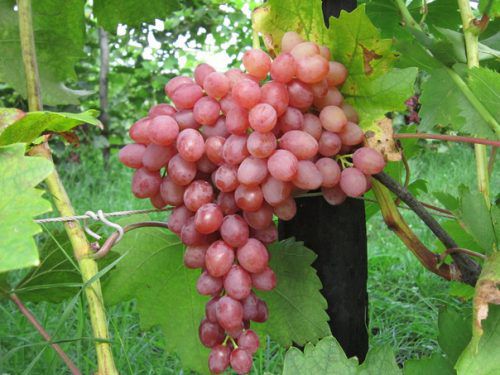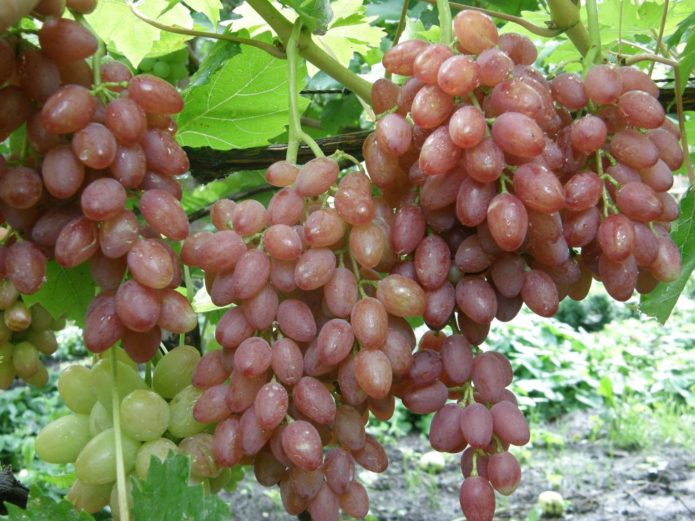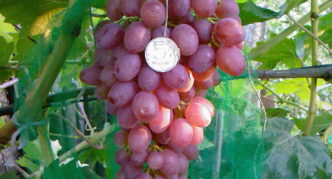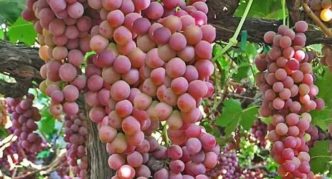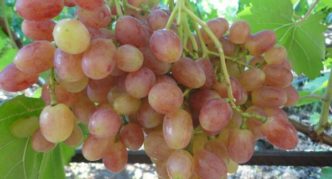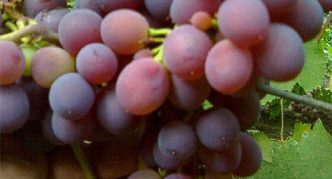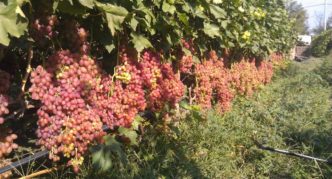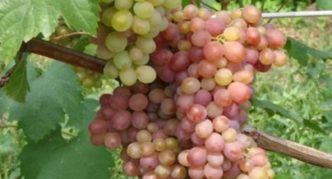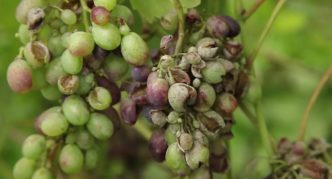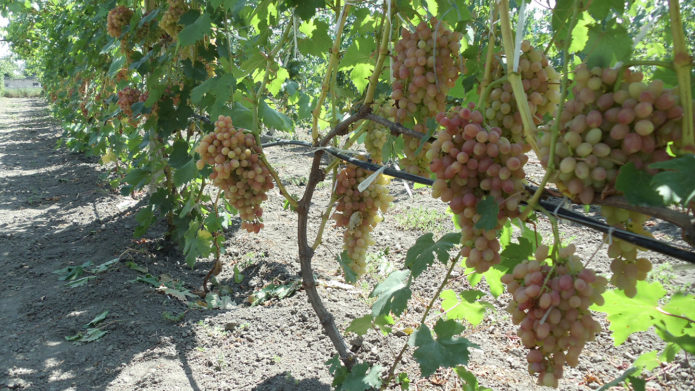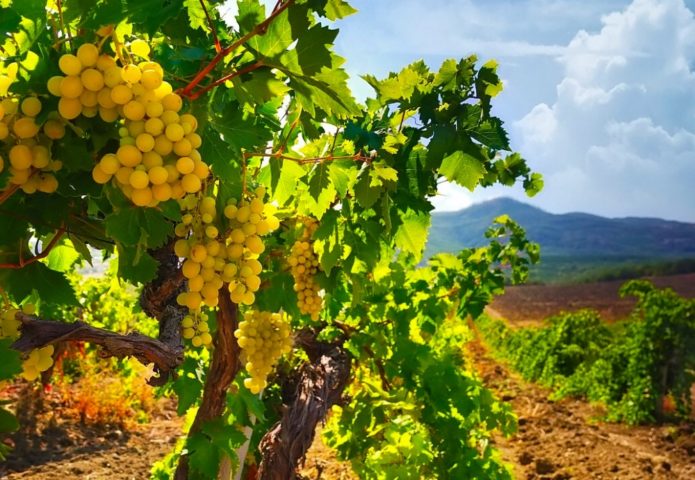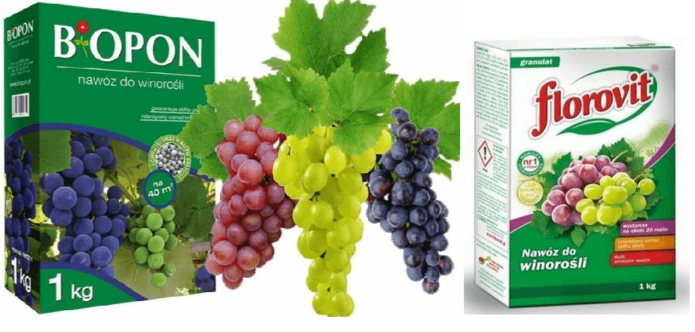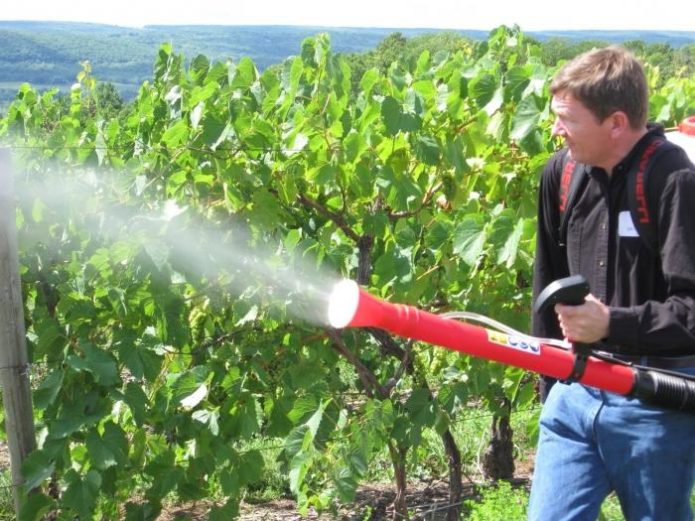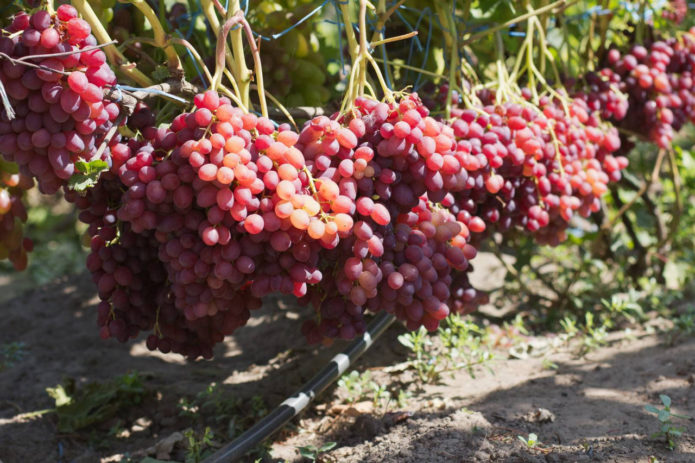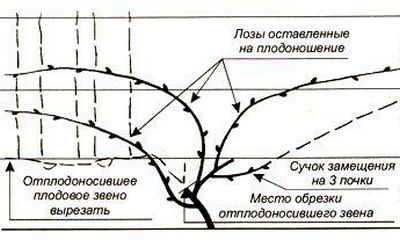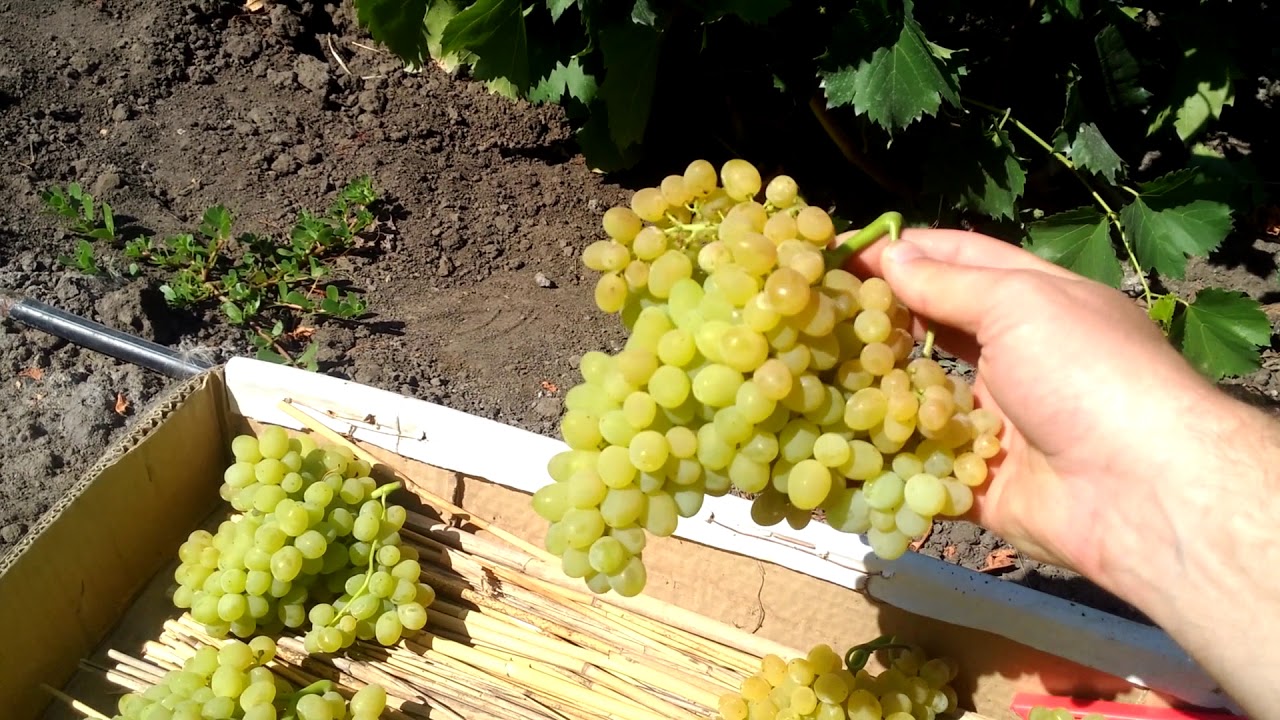The vine is a symbolic culture that came from the depths of centuries. It is a tree of life, a guarantee of festive fun, a symbol of prosperity, and a triumph of success. Bunches of grapes sing, praise and adore the peoples of the whole world, and enjoy its sunny fruits, considering them a message to earthlings from wise gods.
Content
The origin of the radiant raisin
Radiant kishmish is exactly the same message. For its nectar taste is real ambrosia from heaven. But, if we leave aside the divine origin of the variety and go down to earth, then we must pay tribute to its authors - breeders I. Gavrilov, M. Zhuravel G. Borzikova from the Research Institute of Viticulture and Winemaking of the State of Moldova. The history of its creation dates back to the 80s of the last century. It was then that the successful crossing of the Cardinal and Kishmish Pink forms gave an amazing result - an innovative variety for that time turned out: rather large berries did not have seeds at all - instead of them, only rudimentary rudiments. The culture was classified as a high-quality table variety of the Muscat row of the 3rd seedless class. In the register of the Russian Federation, Radiant was included only in 2004, and immediately spread to the North Caucasus and Lower Volga regions.
Variety characteristics
The official characteristics of the variety in some positions do not coincide with the reviews of those who are closely involved in viticulture. So, it happens that in practice, the mass of berries and the weight of a bunch of Radiant is almost twice the same parameters specified in the description of the register of the Russian Federation. Such a discrepancy is understandable, and has nothing to do with gardeners' fables. Official figures often give either minimum or average weights. And the practices are inherent in a note of bragging - then they strive to present their personal cultivated record as a regular occurrence.
The table below lays out the characteristics of the variety obtained from an official source.
Table: characteristics of the Kishmish Radiant variety
| Appointment | Canteen, seedless |
| Ripening period | Medium: late August - early September. 130-135 days from the moment of awakening after winter. |
| The structure of the vine | Vigorous, branched |
| Flower | Bisexual |
| Recommended trim type | 70–80 buds per bush with 5–6 buds per branch. |
| Bunch | The structure is loose, so the grapes are not in close contact with each other. The declared weight of a bunch is 413 g. However, gardeners often note that the maximum weight can reach 1.5 kg. |
| Fruit structure and taste | Egg-shaped, pink. The weight of one unit is up to 3 g. The skin is dense. The pulp is juicy, fleshy. Instead of a bone - its rudimentary remains. The berries have a delicate nutmeg aroma and taste. |
| Sugar and acid content | Sugar - 20.2%.Acid 6.7% |
| Tasting score with a 10 point system | = 9,1 |
| Yield | 126 kg / ha or up to 14 kg per bush |
| Disease resistance | Mildew is weak; Oidium - high; Gray rot - medium. |
| Storage and transportability | Excellent. The fruits can easily withstand even many hours of transportation. Stored until February - March. |
These are objective characteristics. But, if you give the grade subjective assessments, then you cannot do without enthusiastic "ahs" and words of praise. And, indeed, the appearance of the radiant fruit is so good that it evokes a sweet sense of taste even without a sample. The even shape of the berries, the uniform color, the perfect cone-shaped bunch, the color shimmering from golden to crimson - just an exhibition picture for an exquisite still life! When the fruit is bitten, the resulting delight doubles - the pulp is poured into the larynx with delicate juice, pleasing the taste buds of the taster.
Advantages of Radiant over its competitors
Kishmish Radiant has identical characteristics with such forms as Veles, Kishmish Pink, Cardinal. All of these crops are direct competitors of Radiant and belong to table pink nutmeg varieties with approximately the same yield. All have a friable bunch and fleshy fruits weighing 3-5 grams, but if, for example, we compare Radiant Kishmish with the Veles variety, then according to the reviews of winegrowers, Radiant wins due to the dense skin of the fruit. The thin skin of Veles does not allow transporting crops even to the nearest market without damage, while Radiant travels without problems to neighboring regions and over long distances. It is also noted that Veles can ripen unevenly, and a cut bunch shines with a whole spectrum of green-pink shades. From Radiant gardeners always get an even calibrated bunch of ideal commercial quality.
Inhomogeneous coloration is inherent in another competitor of Radiant, namely its parent form - Kishmish Pink grape. It has paler tones, while the northern side of the bunch is close to white in color gamut.
If we take a pair of Cardinal and Radiant, then the latter again wins due to a higher resistance to diseases and the presence of rudiments instead of a bone, while Cardinal loses in this regard.
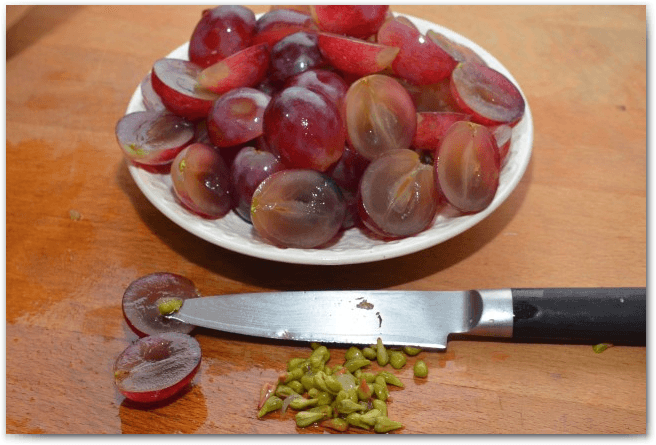
The Cardinal variety loses to Veles and Kishmish Radiant by the fact that it has fully developed seed-seeds inside
As for the ripening period of these varieties, they cannot be attributed to advantages or disadvantages. It's a matter of taste. But you can compare.
- Cardinal and Veles are very early ripening varieties. They ripen in 100-105 days and are ready for fresh consumption by the beginning of August. But both varieties are poorly stored on the branches, and you can leave the clusters on the bushes for no more than 10-12 days.
- Radiant kishmish has a ripening period of 130–135 days and is considered to be medium late. The main harvest begins in the second half of August and lasts until September, with no rotting or shedding of fruits. In the southern regions, the Stepson harvest of Radiant begins to form from mid-September and can be on the branches without damage until early October.
- Kishmish Pink belongs to the late varieties. Its ripening period is 135-140 days. Bunches not collected in time soften and crumble.
The gardener will definitely win if he cultivates at least a couple of pink varieties on his site, taking one from the early ripening period, and the second from the late one. Then the opportunity to enjoy fresh fruit with a delicate nutmeg flavor will be from early August to mid-October. The specified period, of course, is not an axiom, because yield is a relative concept. It is influenced by geo-climatic zoning, and weather conditions, and the duration of the winter period, and the quality of crop care, and the setting of fruit-bearing buds in the previous growing season.
Photo gallery: three competitors to the Kishmish Luchisty variety
- Delicate pulp, excellent transportability and lack of seeds allowed Radiant to take the leading position among raisins
- The heterogeneous color of Kishmish Rozovoy and its low transportability are the main disadvantages of the variety.
- An early variety Veles ripens 100-105 days after bud break
- The main disadvantages of the Cardinal are its low resistance to diseases and the presence of seeds in the fruits.
Disadvantages of the variety
Radiant is not perfect. There are parameters, according to which it plays up to its closest competitors. Its disadvantages include:
- Lack of frost resistance. Radiant is suitable only for southern regions with an outside air temperature during the rest period that does not go beyond zero. Although it is believed that the variety can tolerate frosts down to -150, it is not always so. Snowless southern winters can harm the bark and affect shoot formation, which can significantly reduce productivity. If the culture is not grown in the form of a trunk, then a light shelter with peat or coniferous paws can save it from freezing in winter.
- Overly heavy bunches. They can greatly overload the branches and pull them towards the ground. This threatens not only with breakage of layering and pests crawling from the ground, but also with a decrease in the potassium content in fruits, which, in turn, will lead to their cracking and wateriness.
- Grinding berries. This phenomenon can occur due to overloading the bush with bunches. At the same time, according to gardeners' reviews, small fruits are found both in the year of large bunches and the next after it.
- Not the highest immunity to disease. Therefore, such techniques as feeding and pruning are required for raisins throughout the growing season.
Photo gallery: Disadvantages of the Kishmish Radiant variety
- Weak frost resistance does not allow to grow Radiant Kishmish in regions with severe winters.
- Overloading the branches with bunches can have a negative impact on the quality of the fruit - they will crack and become watery
- Overloading the bush with bunches leads to shrinking berries
- Radiant kishmish is not highly immune to diseases
Winegrowers reviews
Radiant Kishmish is a good proven variety. Excellent for both industrial cultivation and amateur vineyards. For the past three years, Radiant leader in field sales. If there is one, then Radiant is on sale, and all other varieties are added to it.
With the growth of old wood, the clusters of the Radiant grow in size. The variety is quite harvestable, but the taste ... is something, a real “king of kishmish”. But again, the tastier the variety, the more it requires attention in terms of protection from diseases. He is especially attracted by oidium during ripening. There are also problems with the ripening of vines, but it copes well with short pruning of 3-4 eyes, while giving out up to 1 kg of bunches. A variety for true gourmets.
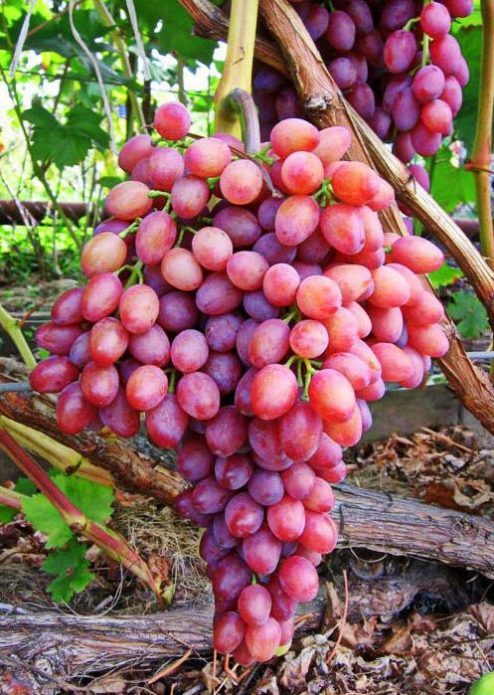
Gardeners believe that the more elite the variety, the more care it requires - this also applies to Radiant
In my conditions, Radiant is very tasty, with a delicate torn skin and nutmeg. Sweet when daytime temperatures drop.
Radiant Kishmish woke up for a long time this year - the snowy winter affected. There were no inflorescences at all. Here it is, a rainy, cold last year's summer - a big load of bunches.
Features of planting varieties Kishmish Radiant
Planting rooted grape cuttings is possible in spring or autumn. First, a place is selected. It should be pretty sunny. Therefore, a partition between buildings, the north or west side of the house, a plot in the shade of a tree will not work. The best solution for Radiant will be the southern slope from the house, the sunny side of the gazebo or arch, or trellises on plantations.
Before planting, it is necessary to study the state of groundwater at the site.Swampy soil, as well as land with surface occurrence of groundwater, is not suitable for grapes. The grapes grown under such conditions often and a lot get sick, disappointing the owners with their low qualities, which do not coincide at all with the original declared characteristics.
A deep hole with dimensions of 0.4 x 0.7 meters is dug under the handle, into the lower layer of which drainage material is poured - crushed stone, gravel, expanded clay. In the second tier, a fertile substrate of sand, peat-sludge and garden soil, flavored with superphosphate nutrient mixture, is placed on it.

In the lower layer of the planting pit, a drainage device from crushed stone, gravel or expanded clay is required
A stalk is installed in the center of the pit and immediately on the south side of it is a piece of rubber hose or hollow pipe with an outlet 6-10 cm above ground level. It will serve as both a drainage hole and a device for delivering water to the roots of the plant, that is, simplified form of drip irrigation system.
The planting stalk must have at least 6 buds. It must be placed in the hole so that two buds are underground, and 4 are above its surface. The cutting is watered abundantly, dug in, and the soil around it is compacted. After all the operations done, the 2 upper eyes are removed at an angle of 450... This will serve as a catalyst for growth - the grapes will strive to make up for losses and will quickly gain weight.

When planting a green cutting it is necessary to cut off the apical buds, leaving only 3-4 shoots or unblown buds
The distance between the seedlings is at least 2 meters. Distance in row spacing up to 3 meters.
The basics of caring for Kishmish Radiant grapes
To minimize all the stated shortcomings, Radiant raisins need careful care.
The cultivation method recommended by the register of the Russian Federation for the Kishmish Luchisty variety is the standard formation of the bush. However, in many farms fan-and-sleeve formation is preferred, in which the main branches are fixed on arches, trellises or pylons of the gazebo. Both methods are valid. The main thing is to distribute the vines so that the ripening bunches always have enough air, sun and wind. This will reduce the risk of acquiring typical grape diseases.
Spring feeding
Working with the vine begins immediately after the snow melts and the cover is removed. In different regions, this time can come in different ways, so the dates vary from March to mid-May. Biopon, Florovit, Meister-Agro are considered good spring fertilizers, since all minerals are properly balanced in them, including nitrogen, potassium and phosphorus. All solutions are prepared according to the manufacturer's recommendations. Organic lovers can use rotted manure, chicken manure, peat compost.
It should be noted that additives are applied even to fertile soil, because grapes can draw all the juices from the earth, emptying it to the last useful element. The first spring feeding, which is carried out before the leaves appear, are usually root. In order for the root to receive a sufficient number of the necessary elements, it is necessary to make a groove on a circle at a distance of 30-50 cm and pour the prepared solution into it. Such nutrition after a long winter period will wake up the roots and make them work for the benefit of the foliage, stem and branches.
Root feeding can be done through a section of a hollow pipe near the bush, if one was built during planting. This is the best way to apply spring fertilizer.
Top dressing before budding
It is known that the color and formation of the ovary takes a lot of energy from the plant. To replenish them, you need to feed the bush two or three times.During this period, preference is given to phosphorus-potassium fertilizers with the addition of manganese, copper, boron and zinc. If the benefits of nitrogen, phosphorus and potassium, working for the formation of the green mass and the formation of the ovary, have already become a textbook, then the other trace elements are often forgotten, considering them small and insignificant.
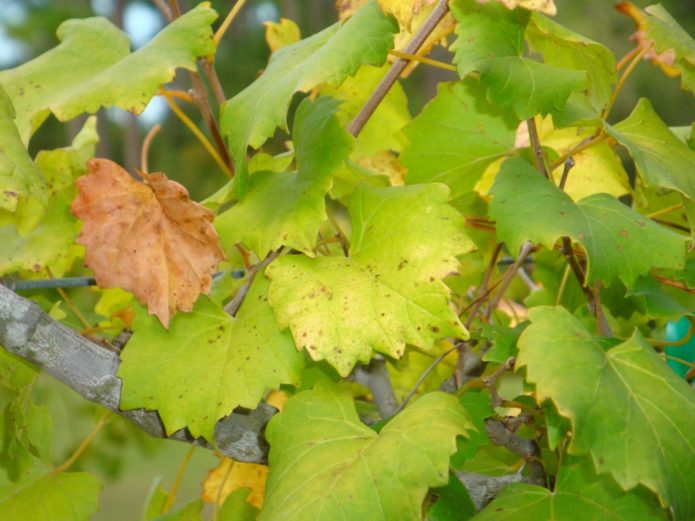
With a lack of nitrogen, the grape leaf stops growing and developing, begins to wither and fall off in the middle of summer
All elements are important, they all contribute to the development of the grapes.
Thus, iron, copper and zinc significantly increase the plant's resistance to various diseases. Calcium is responsible for healthy foliage and new root formation under the ground. Boron, silicon, sulfur, magnesium control the turgor of the leaves, the quality and keeping quality of the fruit. Minerals will not only give strength to the aboveground and underground parts of the plant, but also serve as a good prevention of diseases.

The lack of iron in the nutrition of grapes changes the entire color of the leaf - both he himself and the veins inside turn pale
Therefore, summer nutrition of grapes is mandatory. It can be both root and foliar. It is advisable to observe their alternation. Foliar top dressing is better done from a spray bottle than from a watering can with a diffuser, since the spray area will be larger in this case. For this, a nutritional mixture is suitable, combining in its composition from 3 to 6-7 elements, including potassium sulfate, urea, ammonium nitrate, boron, zinc, copper, iron or copper sulfate.
Watering, loosening, mulching
Of course, grapes do not live with a single feeding. What else should be done during the growing season?
First of all, water it regularly. The grape responds well to its drip version, organized through a system of underground pipes. By supplying water directly to the roots of the plant, we simultaneously solve many problems:
- we feed those underground branches of them that cannot be reached from the surface of the earth;
- we moisten the near-root space of the soil, creating a special microclimate of humidity in the bowels;
- we reduce the risk of developing fungal diseases of grapes, because moisture, as one of the main components of the emergence of a fungus, does not get on the leaves;
- we save water, because it comes in as much as one plant needs, and, at the same time, there is no effect of moisture evaporation from the leaves.
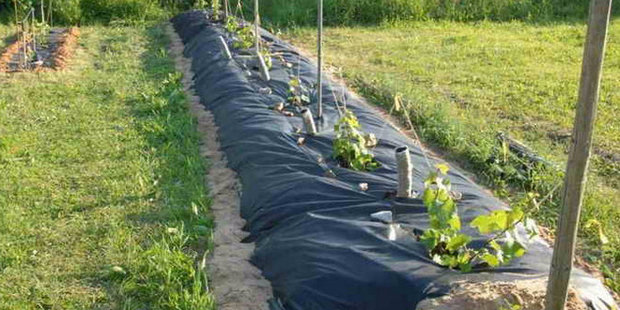
Drip irrigation through a pipe system will help create a favorable microclimate directly at the plant roots
Watering through special mechanical turntables is possible if the vineyard occupies several football fields. But only in the morning or evening, it is not harmful to the grapes.

Watering plantations by spraying is possible only in the early morning or in the evening after sunset
You must always remember that grapes require a lot of water - from 30 to 40 liters per bush per week. Leaving a crop without watering for three days or more can lead to not only a decrease in yield, but even the death of a bush.
An important role is played by loosening the top layer of the soil and its subsequent mulching. Loosening will prevent the roots from rotting and will provide oxygen to the soil. The manipulation is carried out at least twice a week after wetting the soil.Mulching protects the roots from drying out, and the soil from the germination of unwanted weeds. Use black nonwoven fabric or hay as mulch.
Pruning
As noted above, the Kishmish Radiant variety is prone to overloading the branches with bunches. To prevent self-destruction of branches, it is recommended to regulate the density of buds and ovaries of brushes for one shoot. This can and should be done by cropping.
Even in ancient times, people noticed that those grape bushes that were gnawed by a donkey grew and bore better the next year than those that remained untouched. Gradually, people began to do the work of the donkey. This is how pruning appeared - a procedure that has become key in the formation of the number of shoots, and, accordingly, the yield.
Normal for Radiant will be considered a shoot length of 3 meters with 5-6 eyes. Anything that exceeds this limit is cut off. Some gardeners allow 10–12 buds per shoot, arguing their actions with the love of raisins for dense tree branches. But then the vine turns out to be overcrowded, and the standard supports will not be enough for it. It will be necessary to install additional supports. At the same time, it is not a fact that all the brushes will ripen in high-quality performance and the berries will not peel. As for the number of clusters on the shoot, the optimal number is called 1-2 clusters.
The Radiant bush will be organic and productive if 70 eyes remain on a 4-year-old and older plant, and the total load on the bush is 22-27 shoots.
Pruning is done in the fall after harvest and complete leaf fall. After pruning, the plant is provided with additional nutrition from the combined microgranules, minus the nitrogen component.
Video: Radiant Kishmish grapes
By the degree of care Kishmish Radiant - grapes are not more difficult than any other variety. Planting and forgetting about him will not work. But there is no exhausting hard work either. There are the usual feeding, pruning, watering, setting supports and garters. If you really want pink berries with the aroma of nutmeg nectar, then you have to serve grapes. Radiant - he, after all, according to the estimates of many winegrowers, is also the best of all raisins!
